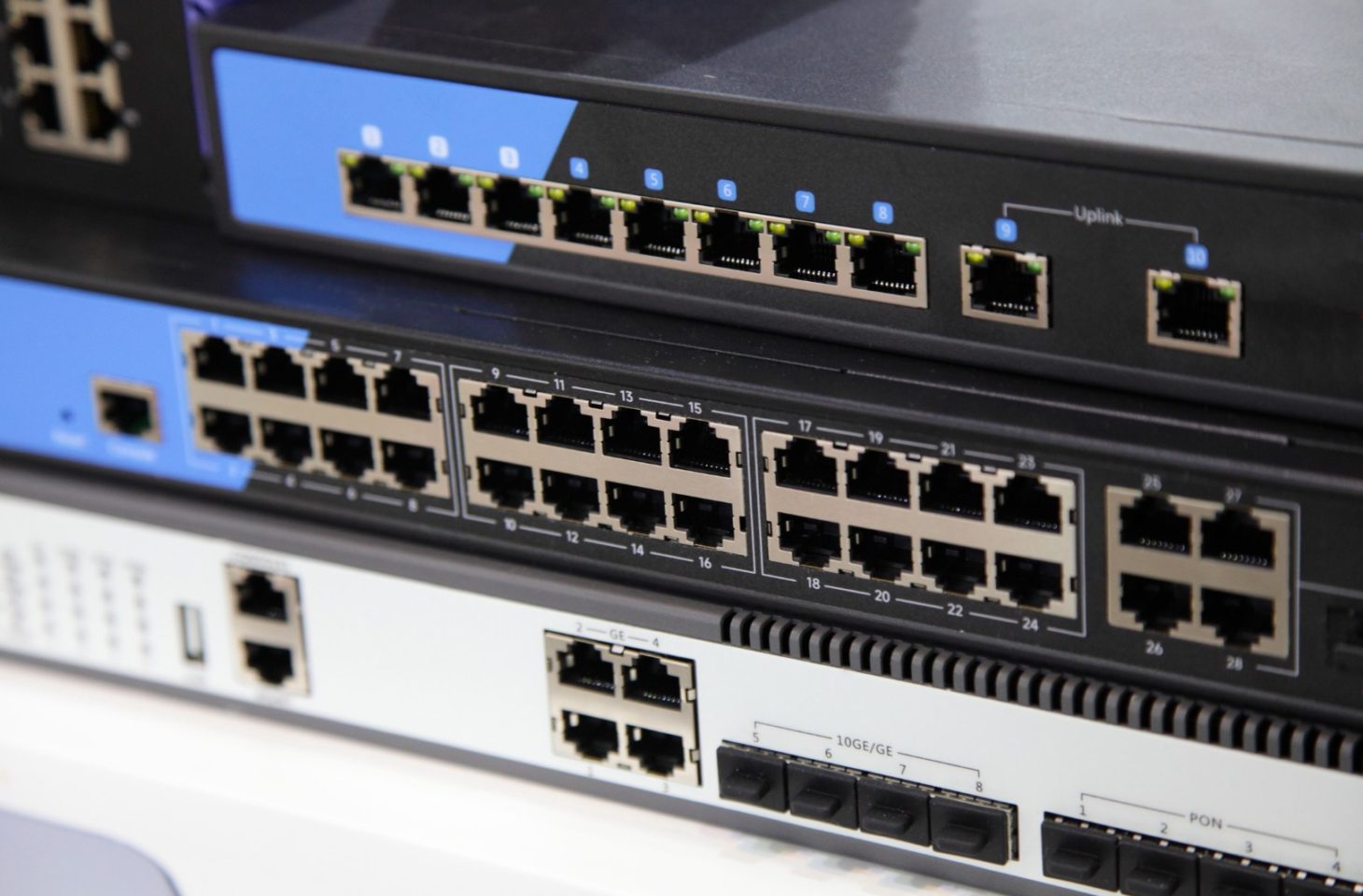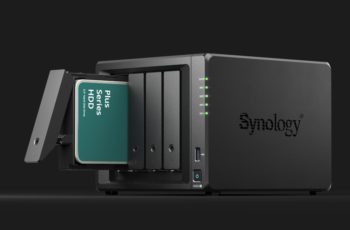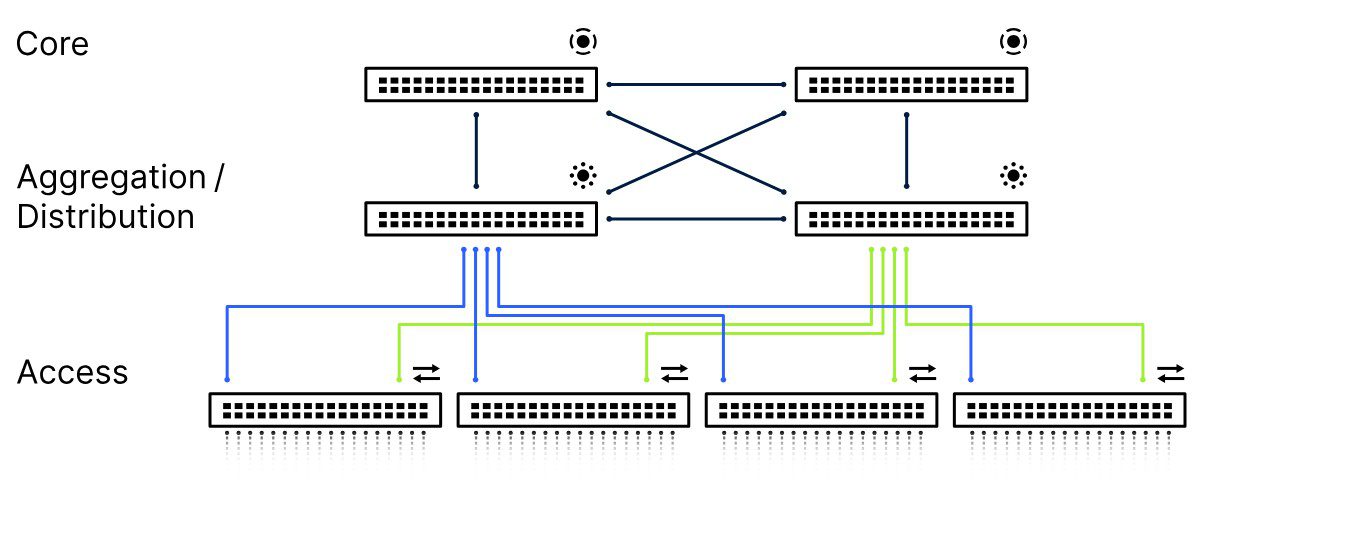The Benefit of Network Switches: Take your network to the next level
- November 20, 2024
- 0
The faster your business grows, the more devices you have to connect and the more crowded the network becomes. With the help of network switches, you can build
The faster your business grows, the more devices you have to connect and the more crowded the network becomes. With the help of network switches, you can build













The faster your business grows, the more devices you have to connect and the more crowded the network becomes. With the help of network switches, you can build additional redundancy in the network so that you always stay connected.
The network is the mainstay of IT environments. If the network doesn’t work, your business can’t work either. However, the work of network administrators has not become easier. Due to the explosion of smart devices, the average corporate network is very busy.
“Today there are many more devices. They have laptops, smartphones, printers and other devices that all need to be connected to the network. The more processes you digitize, the more dependent you become on the network. “The company network must always be ‘on’,” says Michael Müller, VP Wired & Wireless LAN at Lancom Systems.
A network switch helps meet the increasing proliferation of connected devices. We’ll dive deeper into the what and why of network switches with Müller.
A network must grow with the needs of the organization. A network switch introduces a hierarchical structure to a network. This increases the network’s capacity to connect more devices, from a few to thousands, without significantly impacting performance. In its simplest form, a network switch is just an additional set of LAN ports for a router.
Unlike a router, which controls traffic between networks, a switch manages traffic between devices on the same network. More advanced switches are also equipped with additional functions for data security or for creating virtual networks in addition to the physical network.
The keyword that Müller uses to summarize the role of network switches is redundancy, a popular term in the IT sector. “By using redundancy protocols such as stacking or Virtual port channel (VPC), also known as Multi-chassis link aggregation (MC-LAG) a LAN infrastructure with optimal reliability can be realized. This ensures connectivity at all times.”
The company network must always be switched on.
Michael Müller, VP Wired & Wireless LAN at Lancom Systems
Müller is convinced that both large and small organizations benefit from a hierarchical network architecture. “Every organization needs high network accessibility, including SMEs. Network switches provide the necessary redundancy to keep the network operational at all times. What depends on the size of the organization is how many layers in the network are needed.”
The switch architecture forms the basis for the efficiency and performance of the entire network. A two-tier network consists of one (or more) distribution switches, which are then connected to access switches. The access switches are at the lowest level in the hierarchy and forward data packets to connected endpoint devices, for example via an access point to which the device is looking for a connection.
The distribution switch is the distributor in the network and is placed between the core and the access layer. The job of this type of switch is to ensure that the right data packets reach the right devices in the access layer. The distribution switches categorize the data traffic from the core and forward it to the access switches.
“In many situations, a two-tier network architecture is sufficient. But an organization that has, for example, multiple buildings on a campus or even multiple campuses needs an additional core switch that communicates with the distribution and access switches. A three-tier architecture offers high performance and maximum reliability for larger networks, says Müller.
The core switch assumes the role of the central node in a three-tier architecture. They are responsible for routing data from the core layer to the lower layers of the network. The performance of the entire network depends on how well the core switch does its job.

In order to forward large amounts of data, it is not uncommon to place several core switches in the network core. This helps, among other things, to avoid overloading data packets, which leads to core layer failures. Therefore, it is very important to place core switches with sufficient capacity in hierarchical Ethernet networks.
Lancom recently expanded its switch portfolio with the CS-8132F, the new top model from the network specialist. This switch is designed to support multi-tier campus networks. With powerful specifications such as 32 100G QSFP28 ports and a switch capacity of 6.4 Tbit/s, the switch is intended to help prepare networks for bandwidth-intensive use.
This is also important because the networking industry does not stand still. “The development of WLAN also influences network requirements,” notes Müller. “Since Wifi 6 we have been talking about multi-gigabit internet: 10 Gbit ports are a reality. POE+ (Power over Ethernet according to IEEE 802.3at) is no longer good enough as using the three frequency bands now available with Wi-Fi 6E and Wi-Fi 7 consumes more energy. High Power PoE++ (according to IEEE 802.3bt) with up to 90 W of power per port will become the new standard.”
“Switches must also become more powerful to support this development at all levels of the network. Wi-Fi 7 requires throughput of up to 25G for distribution switches and up to 100G in the core switch due to the high data volumes at the access layer. That’s more than double what is needed for WiFi 6E today. You need a high-performance architecture to prepare your network for the introduction of WiFi 7,” concludes Müller.
Since WiFi 6 we have been talking about multi-gigabit internet. The network architecture must be powerful enough to support this.
Michael Müller, VP Wired & Wireless LAN at Lancom Systems
This is an editorial contribution in collaboration with Lancom Systems. You can find more information about their range of switch architectures for campus networks here.
Source: IT Daily
As an experienced journalist and author, Mary has been reporting on the latest news and trends for over 5 years. With a passion for uncovering the stories behind the headlines, Mary has earned a reputation as a trusted voice in the world of journalism. Her writing style is insightful, engaging and thought-provoking, as she takes a deep dive into the most pressing issues of our time.